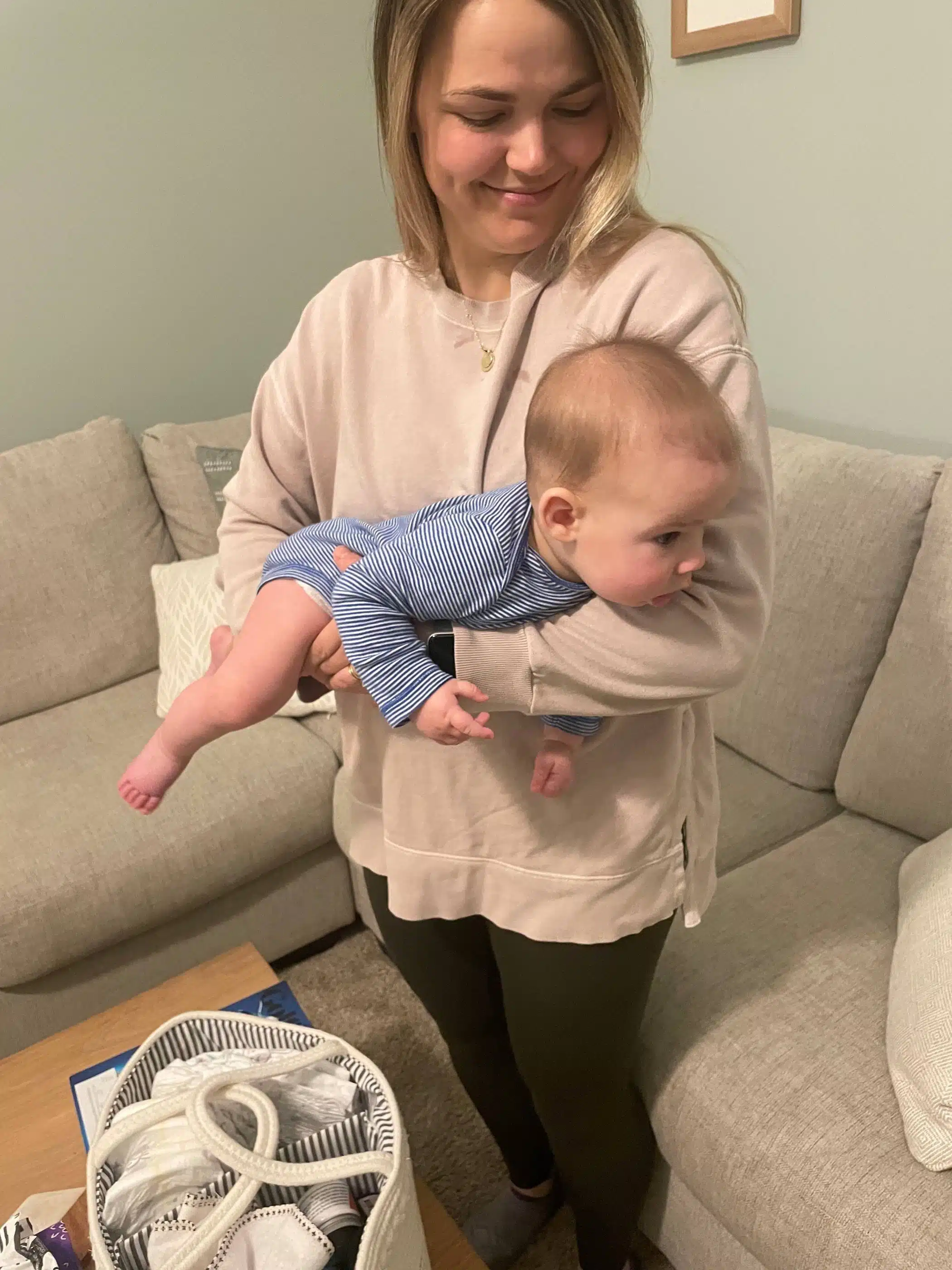Back to Sleep, Tummy to Play
Parenting Tips
 Posted by: Rebecca Bazzoni 2 years ago
Posted by: Rebecca Bazzoni 2 years ago
Did you know that tummy time is essential for a baby’s core, motor and sensory development and their achievement of all sorts of age-appropriate milestones? Tummy time provides:
Sensory Input: In tummy lying, a baby receives great tactile and deep pressure input to their face, trunk, arms and legs as well as vestibular input when they turn their head to face the other side. This provides critical information to the baby’s brain about body position and where their body is moving in space. Their brain’s ability to process this information will greatly impact their coordination and motor skills later.
Core Strengthening: As a baby begins to be able to push through their arms and hold their head up, they strengthen core muscles supporting the spine and shoulder girdle. This core strength later provides the foundation they need to develop fine and gross motor skills as well as feeding and swallowing skills.
Visual Motor Skills: A baby placed on their back sees the ceiling above, but a baby placed on their tummy can prop up on their elbows to see and engage with the world around them! They learn how to shift their visual focus from items near to far and how to visually scan across their midline. This foundational skill will be necessary when they later learn to read and to write across a page. The visual skills they develop in tummy lying impact their hand-eye coordination and ultimately their ability to achieve many other motor milestones.
Integration of Primitive Reflexes: All babies are born with primitive reflexes. These reflexive movements will disappear naturally as they begin to move around their environment. Tummy time plays an important role in helping your baby to grow out of these reflexes so that they can develop purposeful, controlled, and coordinated movements.
Crossing Midline: Positioned on their tummy, a baby learns to shift their weight to reach for toys around them and most importantly to reach across their midline! Crossing midline is a foundational skill that helps them to develop the ability to use the right and the left side of their body together. Without this critical skill a young child will later have difficulty with activities like: getting dressed, tying their shoes, drawing, writing, cutting, crawling, walking, climbing stairs and riding a bike, just to name just a few.
The “Back to Sleep” campaign initiated in the early 1990s was successful in reducing the incidence of Sudden Infant Death Syndrome (SIDS) by 50%. SIDs is the sudden, unexpected and unexplained death of an apparently healthy baby. While the Back to Sleep campaign was successful in saving countless infant lives, babies were not spending enough time on their tummies and pediatricians soon started seeing an increase in the number of babies presenting with developmental delays as well as flat spots on the back of their heads (also known as plagiocephaly).
Infants should always be placed on their backs to sleep, but it is equally important that they be positioned on their tummies when alert and supervised! Tummy time provides them with the foundational skills they will need to achieve many other developmental milestones.
Tummy Time Tips
It is not unusual for a baby to get fussy when placed on their tummies. Here are a few tips for a more successful tummy time:
- Start early! Your baby should be given regular tummy time from the day you bring them home.
- Build in gradually. Begin in small increments of 1-5 minutes, 3-5x/day. Gradually add time so that baby can tolerate at least 1 hour of tummy time per day by the time they are 3 months old.
- Get down on baby’s level: Infants LOVE to look at faces! Your baby will be much more motivated to lift their head to look at you. Talk to them or sing to them while you are there.
- Try variations in position to put baby at ease:
- Lap Soothe: Lay your baby on their tummy across your lap. Place a hand on their bottom to help them feel secure and calm them.
- Tummy to tummy: Lay your baby on your tummy or chest when you lie down or sit reclined in the recliner. Baby will feel comforted by the warmth of your body and will be more motivated to lift their head to look at you!
- Tummy down carry: Place baby on tummy, cradled in your arms as you carry them! Slide one hand between baby’s legs and the other arm supporting the neck and shoulders. Hold them close to you for comfort.
- Tummy time pillow or blanket roll: Use a tummy time pillow or a small towel roll placed under your baby’s chest and behind their arms. This lifts your baby’s upper body slightly, making it easier for them to lift and hold their head up.




Provide daily tummy time for your infant until they are beginning to crawl on their own. Signs that your child may not be getting enough tummy time include:
- flat spot on the back of the head
- rounded posture in sitting
- unable to roll over by 4-5 months
- unable to push up onto hands from tummy lying position by 5-6 months
- unable to army crawl by 7 months
Is your baby already exhibiting a few of these signs? It’s not too late to start giving them play time on their tummy. Remember – back to sleep and tummy to play!
Categories:
You May Be Interested In:

Why Routines Matter for Kids: Structure, Security, Success
6 months ago by Rebecca Bazzoni

Accessible Holiday Celebrations
1 year ago by Rebecca Bazzoni

Introducing the Neurodiversity Umbrella
2 years ago by Rebecca Bazzoni

3 Enriching Summer Activities to Encourage Language Development
2 years ago by Rebecca Bazzoni

